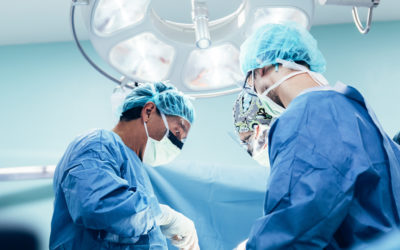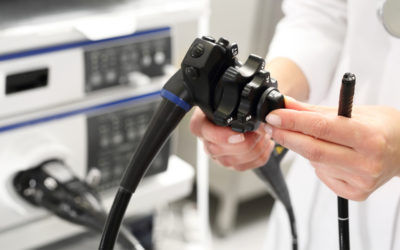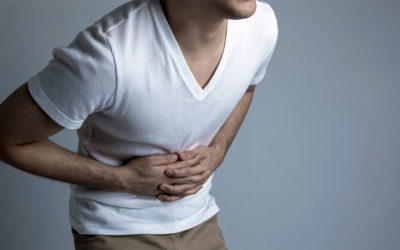Upper GI Endoscopy
Are you suffering with symptoms or a condition affecting your digestive health? Upper GI endoscopy can be a simple outpatient procedure to help diagnose and treat problems with the esophagus, stomach, upper intestine or first part of the small intestine (duodenum). Most often, you’ll be asked to lie on your side on an exam table. To help you stay relaxed, a nurse anesthetist (aka, CRNA) will likely provide a light sedative through an IV. The goal of your care team is to help you keep as comfortable as possible while watching you throughout. Once you’re finished, plan to be taken to a recovery area for a brief time, where the team can monitor you as the sedation wears off. A friend or family member will need to drive you home, and you will likely both receive special instructions for at-home care.
About the Procedure
During upper GI endoscopy, your surgeon gently passes a thin, flexible tube, called an endoscope, down your esophagus. The instrument has a tiny camera on the end, allowing for an up-close view of your upper digestive tract on nearby video monitors. The endoscope also gently pumps air into your stomach to make areas easier to see.
The procedure may be recommended for a variety of reasons, including:
Assessing symptoms: Help your doctor determine what’s causing any uncomfortable digestive problems, such as nausea, vomiting, abdominal pain, difficulty swallowing or gastrointestinal bleeding.
Making a diagnosis: Used to collect tissue (biopsy) to test for diseases and conditions, such as gastroesophageal reflux disease (GERD), celiac disease, anemia, inflammation, or cancers of the digestive system.
Treating a condition: Your doctor can pass special tools through the endoscope to treat problems in your digestive system, such as stopping a bleeding vessel, widening a narrow esophagus, or removing a polyp or foreign object.
Committed to Your Comfort
You’ll be asked to lie on your side on an exam table. To help you stay relaxed, a nurse anesthetist (aka, CRNA) will provide a light sedative through an IV. You may also be given a liquid medicine to gargle or a spray to numb your throat to help keep the endoscope in place, though the tool does not interfere with your breathing. A dedicated team will watch you throughout and keep you as comfortable as possible. You may even fall asleep.
Depending on your unique needs, the endoscopy usually takes 15 to 30 minutes. Results are often available right after the procedure, though it may take a few days if your doctor collects a biopsy.
Recovery & Follow-Up Care
Upper GI endoscopy is considered very safe – specialists regularly perform the procedure with very low risks of complications.
Once you’re done, you’ll be taken to a recovery area for a brief time, where the team will monitor you as the sedation wears off. A friend or family member will need to drive you home, and you will both receive special instructions for at-home care.
In the hours following your procedure, you may experience some mild discomfort, such as bloating or gas, cramping or sore throat, all which should improve in time.
If you have any concerns or are experiencing any serious problems, such as chest pain, problems breathing or swallowing or worsening pain in your abdomen, call your doctor or seek medical attention right away.
Patient results may vary. Consult your doctor about the benefits and risks of any surgical procedure or treatment.
Related Services and Conditions
Surgical Services
We understand that having surgery and spending time in a hospital isn't high on the lists of many people. That’s why we strive to offer outpatient procedures and minimally invasive surgeries. Board-Certified General Surgeon: [divi_library_layout...
Colonoscopy
Colorectal Cancer Screening and Colonoscopy Prep Although colorectal cancer is one of the most common cancers in the United States, it often goes undetected, according to the American Cancer Society. Symptoms do not usually occur until the disease is advanced and 75%...
Gallbladder
Does everything you eat cause pain? Pain in the upper right or upper middle of your stomach after eating may be caused by a gallbladder condition. The gallbladder is located under the liver, which stores and collects bile produced in the liver. When your gallbladder...
Hemorrhoids
You don’t have to sit still for hemorrhoids Did you know that by age 50, about half of people will experience hemorrhoids? If you’re one of them – and you’ve had enough of the burning, itching and pain – learn about your treatment options today. Take a stand against...
Hernia
Hernias can be more than a pain in the side. If you experience a heavy feeling in your abdomen when you bend, pain when you lift heavy objects or a lump that enlarged when you strain and disappears when you lie down, it could be a hernia. Having it treated can not...





